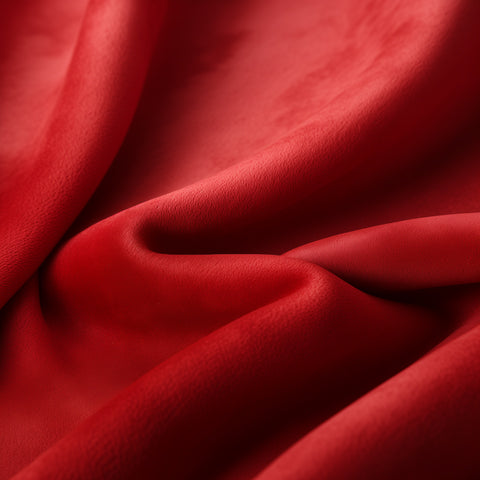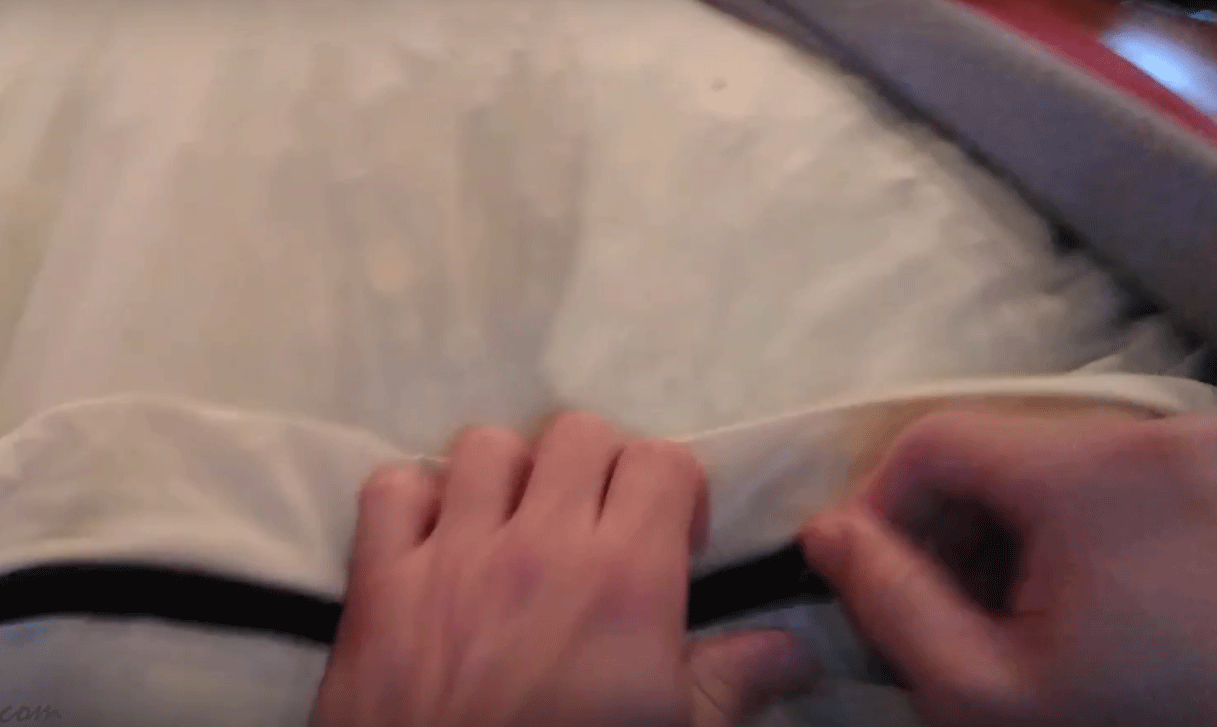Bean Bag Filler: What Kind of Filling Do We Use?
Our Gigantic Bean Bags are filled with 100% recycled, furniture-grade, shredded polyurethane foam filler. That's a lot to say! But, we'll break down what that means here:
1. Polyurethane Foam
Polyurethane foam is a versatile and widely used material that belongs to the category of polymers known as polyols. It is produced through a chemical reaction involving polyols and diisocyanates, resulting in a polymer with a cellular structure, commonly referred to as foam. Here are key details about polyurethane foam:
Formation Process
Chemical Reaction: Polyurethane foam is created through the reaction between polyols (which contain multiple hydroxyl groups) and diisocyanates. This chemical reaction, known as polyurethane polymerization, produces a foam with an open-cell or closed-cell structure.
Cellular Structure
Open-Cell vs. Closed-Cell: Polyurethane foam can have either an open-cell or closed-cell structure. Open-cell foam has interconnected cells, allowing air and moisture to move through the material. Closed-cell foam, on the other hand, has sealed cells, providing better insulation properties. We use open-cell in our bean bags.
Two Types of Polyurethane Foam
Flexible Foam: This type of foam is soft and pliable, making it suitable for applications such as mattresses, cushions, and upholstery. This is the type we use in our bean bag chairs.
Rigid Foam: Rigid polyurethane foam has a higher density and is often used for insulation in construction, appliances, and other structural applications (not bean bags).
Properties
Lightweight: Polyurethane foam is lightweight, contributing to its widespread use in various applications.
Resilient: It has a resilient nature, allowing it to bounce back to its original shape after compression or deformation.
Durable: Polyurethane foam is known for its durability and resistance to wear and tear.
Applications
Furniture: Polyurethane foam is commonly used in furniture cushions, mattresses, upholstery, and high quality bean bag chairs.
Automotive: Flexible polyurethane foam is used in car seats, headrests, and interior components.
Packaging: Foam packaging materials, such as foam inserts and padding, are often made from polyurethane foam.
Environmental Considerations
Recyclability: While efforts are made to recycle polyurethane foam, challenges exist due to its complex structure and the need for specialized recycling facilities.
Sustainability: Innovations focus on developing bio-based polyols and more environmentally friendly manufacturing processes to enhance the sustainability of polyurethane foam.
2. Shredded Form
Bean bag polyurethane foam is often shredded rather than used in a solid form for several practical and comfort-related reasons:
Conformability
Adaptable Seating: Shredded polyurethane foam allows the bean bag to conform more closely to the body's contours, providing a customized and comfortable seating experience. This adaptability enhances the overall support and coziness of the bean bag chair.
Flexibility
Ease of Movement: Shredded foam provides greater flexibility and allows for easier movement within the bean bag. Users can shift and adjust the foam to their liking, creating a personalized and dynamic seating arrangement.
Distribution of Weight
Even Weight Distribution: Shredded foam helps distribute the user's weight more evenly across the bean bag, reducing pressure points and enhancing overall comfort. This feature is particularly beneficial for extended periods of sitting.
Improved Breathability
Enhanced Airflow: The shredded form of the polyurethane foam allows for better airflow within the bean bag. This improved breathability helps regulate temperature and prevents the buildup of heat, contributing to a more comfortable seating experience.
Fluffability
Ease of Fluffing: Shredded foam is easier to fluff and reshape compared to solid foam. This ensures that the bean bag maintains its desired shape and support over time, providing long-lasting comfort.
Adjustability
Customizable Support: Shredded foam allows users to adjust the level of support by adding or removing filling as needed. This customization feature caters to individual preferences, making the bean bag adaptable to different users and situations.
Packaging and Shipping
Efficient Packaging: Shredded foam is more compressible, making it easier to package and ship. This is advantageous for both manufacturers and consumers, as it reduces shipping costs and allows for more convenient delivery.
Recycling and Sustainability
Use of Recycled Materials: Shredded polyurethane foam can be made from recycled materials, contributing to sustainability efforts by repurposing existing resources and reducing waste.
In summary, the decision to shred polyurethane foam for bean bags is driven by the desire to enhance comfort, flexibility, and adaptability. Shredded foam provides a versatile bean bag filler that conforms to the user's body, offers even weight distribution, and allows for easy adjustments, ultimately contributing to a more enjoyable and personalized seating experience.
3. Recycled Content
The "100% recycled" aspect indicates that the polyurethane foam used in this filling is sourced entirely from recycled materials. Using recycled polyurethane foam as bean bag filling is a conscious choice that aligns with sustainability and environmental responsibility.
Here are detailed reasons why recycled polyurethane is favored:
Waste Reduction
Reuse of Materials: Utilizing recycled polyurethane reduces the need for new raw materials, contributing to the reduction of waste in landfills and minimizing the environmental impact associated with the extraction and production of virgin materials.
Energy Conservation
Lower Energy Consumption: Recycling polyurethane foam requires less energy compared to the production of new foam. This conservation of energy resources contributes to a more sustainable and eco-friendly manufacturing process.
Environmental Impact
Reduced Carbon Footprint: The production of recycled polyurethane generally results in a lower carbon footprint compared to creating new foam. This reduction in greenhouse gas emissions is a positive environmental outcome.
Circular Economy
Promoting Circular Practices: Using recycled materials supports the concept of a circular economy, where products and materials are reused and repurposed rather than discarded. This approach contributes to a more sustainable and resource-efficient system.
Conservation of Resources
Preserving Raw Materials: By opting for recycled polyurethane, there is less reliance on the extraction of finite resources. This conservation helps protect natural habitats and ecosystems that might be affected by resource extraction.
For Eco-Conscious Consumers
Environmental Awareness: Consumers are increasingly drawn to products that demonstrate a commitment to environmental sustainability. Using recycled materials in bean bag chair filler aligns with the preferences of eco-conscious consumers.
Quality and Performance
Maintaining Quality: Recycled polyurethane foam can offer similar quality and performance characteristics as new foam, making it a viable and sustainable alternative without compromising on comfort or durability.
Wider Impact
Industry Influence: Embracing recycled materials in bean bag filling contributes to the broader movement within industries to adopt more sustainable practices. This influence can encourage others to consider environmentally friendly alternatives in their manufacturing processes.
In summary, choosing recycled polyurethane foam as bean bag chair filling reflects a commitment to sustainability by reducing waste, conserving energy, and lessening the environmental impact associated with traditional manufacturing processes. This eco-friendly choice appeals to environmentally conscious consumers and contributes to the broader goal of creating a more circular and sustainable economy.
4. Furniture-Grade
Using "furniture grade" polyurethane foam in bean bags signifies a commitment to providing high-quality, durable, and comfortable seating options. Here's a detailed explanation of why furniture grade polyurethane foam is preferred:
Comfort and Support
Optimal Comfort: Furniture grade polyurethane foam is designed to provide optimal comfort and support. It offers a balance between softness and firmness, ensuring a comfortable and enjoyable seating experience for users.
Durability
Long-lasting Performance: Furniture grade foam is known for its durability and resilience. It can withstand regular use without losing its shape or structural integrity, contributing to the longevity of the bean bag.
Quality Standards
Meets Our Standards: Furniture grade polyurethane foam adheres to specific quality and performance standards set for the furniture industry. This ensures that the foam used in bean bags meets or exceeds expectations for durability, comfort, and safety.
Consistent Density
Uniform Composition: Furniture grade foam is manufactured to have a consistent density throughout, preventing uneven wear and maintaining the intended level of support over time.
Versatility
Suitable for Various Furniture Shapes: Furniture grade foam is versatile and can be used in a wide range of furniture applications. Its adaptability makes it suitable for bean bags of different shapes and sizes.
Resilience
Quick Recovery: Furniture grade foam has a quick recovery time, meaning it returns to its original shape promptly after compression. This resilience enhances the overall performance and comfort of the bean bag.
Safety Standards
Compliance with Regulations: Furniture grade polyurethane foam often complies with safety and flammability regulations, ensuring that the bean bags meet established industry safety standards.
Customer Satisfaction
Enhanced User Experience: By using furniture grade foam, manufacturers aim to enhance customer satisfaction. The quality and performance of the foam contribute to a positive and comfortable user experience, encouraging repeat business and positive reviews.
Brand Reputation
Building Trust: Utilizing high-quality materials, such as furniture grade polyurethane foam, contributes to building and maintaining a positive brand reputation. Customers are more likely to trust products that prioritize quality and durability.
In summary, the use of furniture grade polyurethane foam in bean bags reflects a commitment to providing customers with comfortable, durable, and high-quality seating options. It aligns with industry standards, enhances the overall user experience, and contributes to the brand's reputation for delivering reliable and long-lasting products.
Learn All About What Our Bean Bags Are Made Of
-

Bean Bag Covers
Learn All About Our Bean Bag Covers -

Bean Bag Liners/Inserts
Learn All About Our Bean Bag Liners/Inserts


